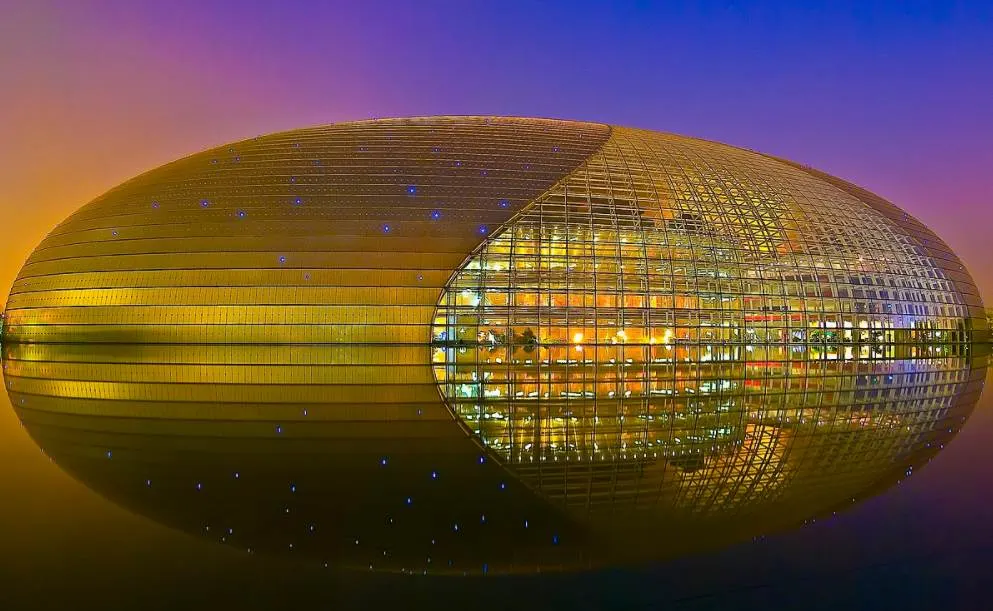Beijing is the capital city of the People’s Republic of China and the second-most populous city in the country after Shanghai.
It’s an enormous city that combines traditional palaces and temples with modern skyscrapers and structures.
It’s is one of the most important cities in the world and is home to the most Fortune Global 500 companies on the planet.
It’s also one of the oldest cities with a history of over 3,000 years. It was the most populous city in the world for nearly the entire second Millennia A.D. as well.
Below you can discover the most famous buildings in Beijing and learn some of the most interesting facts about them.
1. Great Wall of China
The Great Wall of China is arguably one of the best-recognized landmarks in the world. It was built over multiple centuries, a process that started as early as the 7th century B.C.
The main purpose of this immense fortification was to protect the northern part of ancient Chinese states and Imperial China from invaders.
Even though there are multiple spots you can visit this 20,000 kilometers (12,000 miles)-long wall, the most popular sections are those located near Beijing.
These are also some of the most recent parts of the wall as they were built during the Ming Dynasty (1368–1644).

2. Forbidden City

The Forbidden City is a palace complex in central Beijing that can hold a candle to the Great Wall of China in terms of size.
It’s located in the Dongcheng District of the city and forms the central part of the so-called Imperial City, the official residence of the Emperor of China during the Ming and Qing dynasties.
It’s estimated that over a million workers participated in the construction of a total of 980 buildings between 1406 and 1420, staggering numbers indeed.
Today, the palace complex houses the Palace Museum, a national museum that is considered to be the world’s most-visited museum and which has a collection size of 1.86 million items.
Official website: The Palace Museum
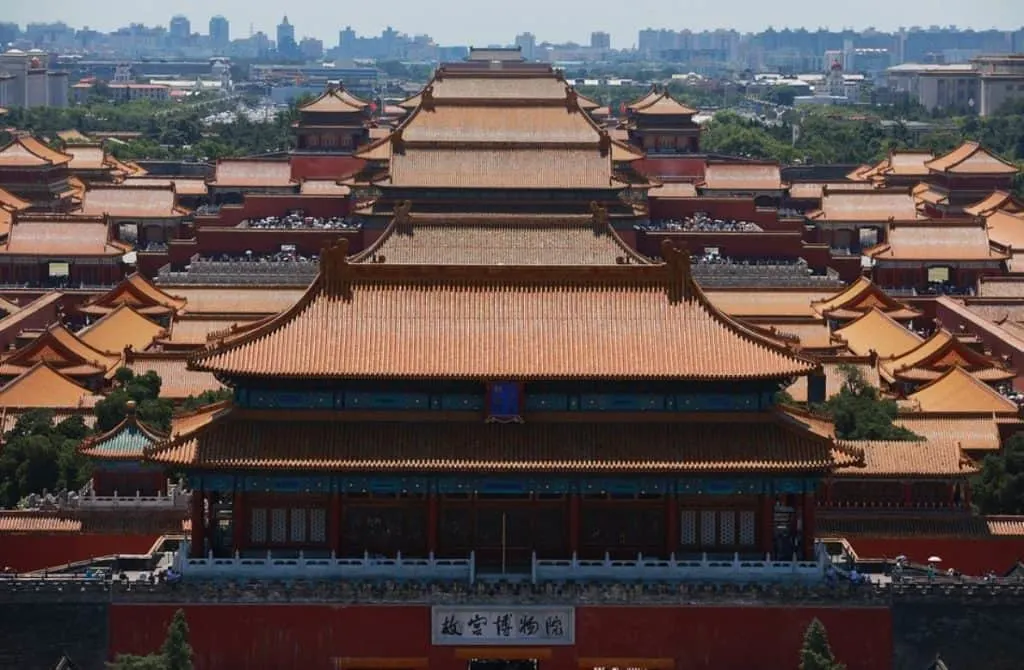
3. Tiananmen Square
Tiananmen Square is the most famous square in Beijing and arguably one of the most famous squares in the world as well.
It was named after the monumental gate that faces it on the northern side which gives access to the Imperial City that houses the Forbidden City.
The square was the sight of the most important moment in recent Chinese history, the proclamation of the establishment of the People’s Republic of China in 1949 by Mao Zedong.
It was also the scene of a bloody military crackdown in 1989. Various famous Beijing landmarks are located on or within the vicinity of the square as it’s considered to be the heart of the city.
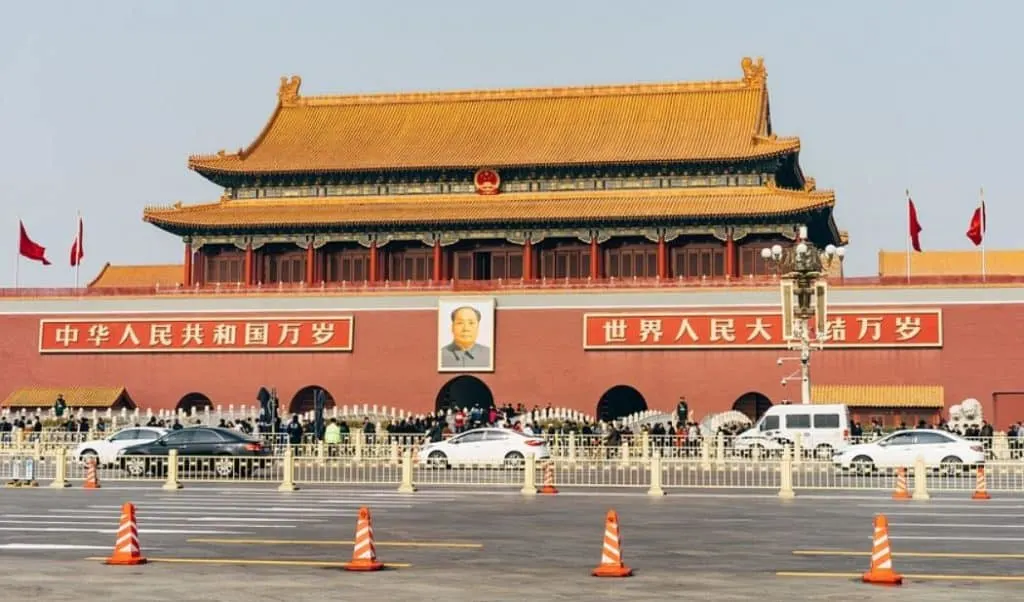
4. Temple of Heaven
The Temple of Heaven is another important Imperial complex in the center of Beijing.
Located within a public park that covers an area of 267 hectares (660 acres), the complex features multiple temples that were built around the same time as the Forbidden City during the early phase of the Ming Dynasty in the early 15th century.
This temple was built by the Yongle Emperor so he could conduct special ceremonies for a good harvest, culminating in prayer to Heaven twice a year.
The compound features 3 main sections built in the typical traditional Chinese architectural style.
This UNESCO World Heritage site is another famous building in Beijing that is visited by millions of people every year.
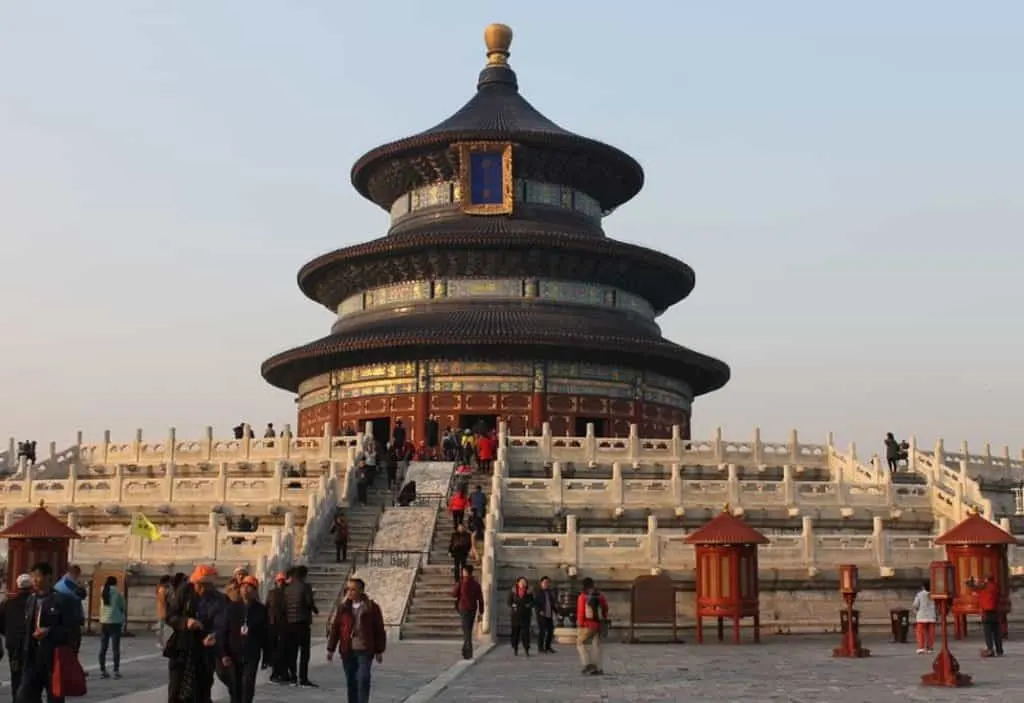
5. China Zun
The city of Beijing isn’t all traditional buildings as it’s a booming city with a huge Central Business District.
One remarkable skyscraper sticks out above all the rest and is called the CITIC Tower.
This amazing structure is nicknamed “China Zun,” a reference to its shape which resembles a traditional Chinese wine container called a “zun.”
This tower stands 528 meters (1,732 feet) which makes it by far the tallest building in the city.
It’s home to a large number of offices occupied by some of the biggest Chinese and international companies, including Alibaba.
It also featured condos and a hotel and there are plans to add an observation deck on the top floor of the building as well, something that will most definitely turn it into a popular tourist attraction in Beijing.
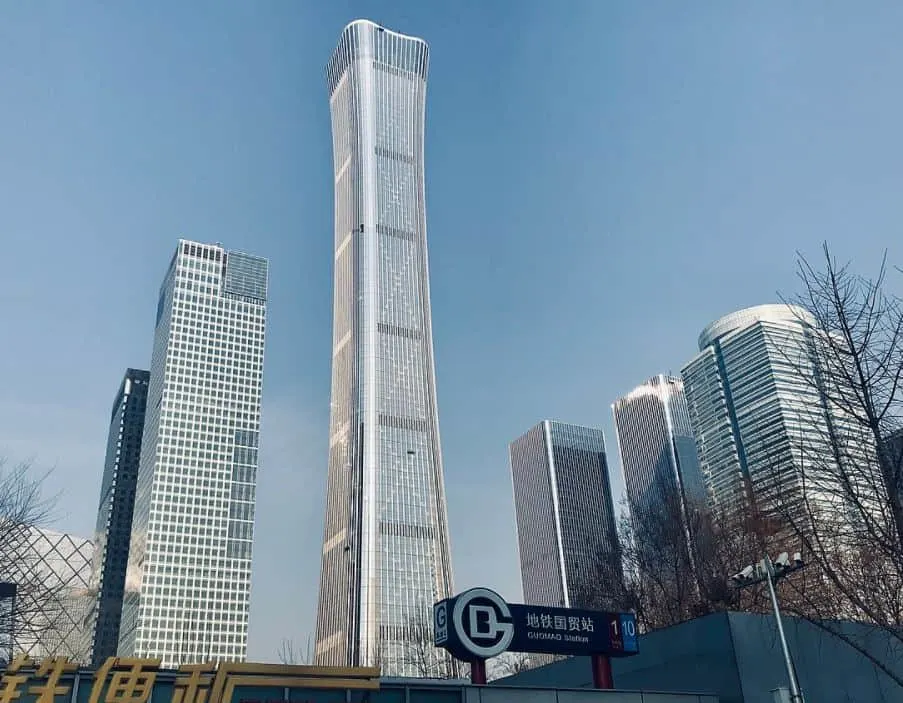
6. Mausoleum of Mao Zedong
One of the most peculiar buildings in Beijing is the Mausoleum of Mao Zedong, the Chairman of the Communist Party of China between 1945 and 1976 and one of the most important people in China’s recent history.
The remarkable mausoleum is located right in the middle of Tiananmen Square and was built shortly after the man’s death in the 1970s.
Just like some other famous Communist leaders, the pickled body of Mao Zedong is preserved in a cooler and put on public display in the heavily guarded central room of this building.
This attraction has been visited by millions of Chinese and international tourists and the mausoleum is still open to the public every single day, except on Mondays.
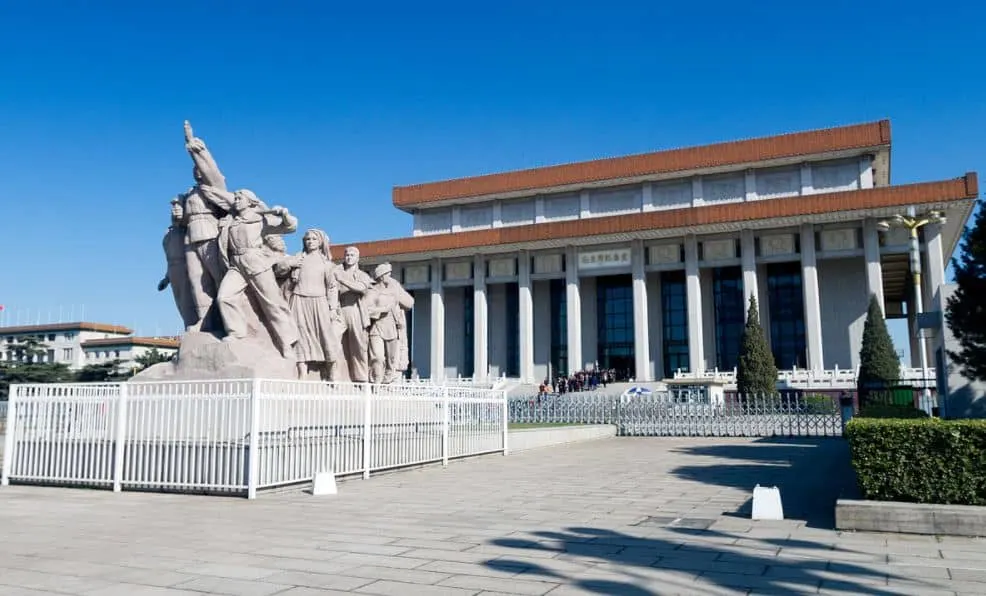
7. Beijing National Stadium
The Beijing National Stadium is the National Stadium of China and is nicknamed the “Bird’s Nest.” That’s a fitting description of this amazing building in Beijing which features a remarkable architectural design.
The stadium was constructed between 2003 and 200 and was built especially to serve as the main venue of the 2008 Summer Olympics that were held in China’s capital that year.
The structure was designed by a team of Swiss architects from the firm “Herzog & de Meuron.” The total price tag of the building was $428 million, not too shabby for a stadium that seats 80,000 spectators.
The exterior of the stadium looks amazing, especially at night, don’t you think?

8. CCTV Headquarters
The CCTV Headquarters is arguably one of the most fascinating skyscrapers that you’ll ever come across. It serves as the headquarters of China Central Television (CCTV) and was completed between 2004 and 2012.
The Deconstructivist building doesn’t appear to be that tall at first sight but it features 51 floors and reaches a height of 234 meters (768 feet), making it the 11th-tallest building in the city.
Dutch architect Rem Koolhaas and German architect Ole Scheeren designed the building which features an opening in its center to interconnect two structures.
The remarkable shape of the building makes it one of the most distinctive buildings in Beijing and fascinating addition to the city’s skyline.

9. Great Hall of the People
The Great Hall of the People is the monumental building that dominates the western part of Tiananmen Square, the famous square in central Beijing.
The building was constructed in 1959 and still serves as a government building of the People’s Republic of China (PRC) and the Chinese Communist Party.
It was one of the so-called “Ten Great Constructions” that were built to mark the 10th anniversary of the People’s Republic of China.
They didn’t mess around in terms of the size of the structure. It has a length of 356 meters (1,167 feet) and a width of 206.5 meters (677 feet), and it features an astounding 171,801 square meters (1,849,239 square feet) of floor space.

10. National Centre for the Performing Arts
National Centre for the Performing Arts is another famous building in Beijing that has a distinctive design. That’s why it’s nicknamed “The Giant Egg.”
The enormous building serves as a multi-functional arts center that houses the main opera house in the city. It’s a huge building and the largest theater complex in all of Asia.
The venue was designed by French architect Paul Andreu (1938-2018), a man who also designed the Grande Arche in Paris. It looks amazing because it’s clad with 18,000 pieces of titanium metal plates.
The semi-spherical building is enormous as it has a length of 212.2 meters (696.2 feet), a width of 143.64 meters (471.3 feet), and a height of 46.28 meters (151.85 feet).
The modern structure was completed between 2002 and 2007 and is an amazing addition just west of Tiananmen Square.
